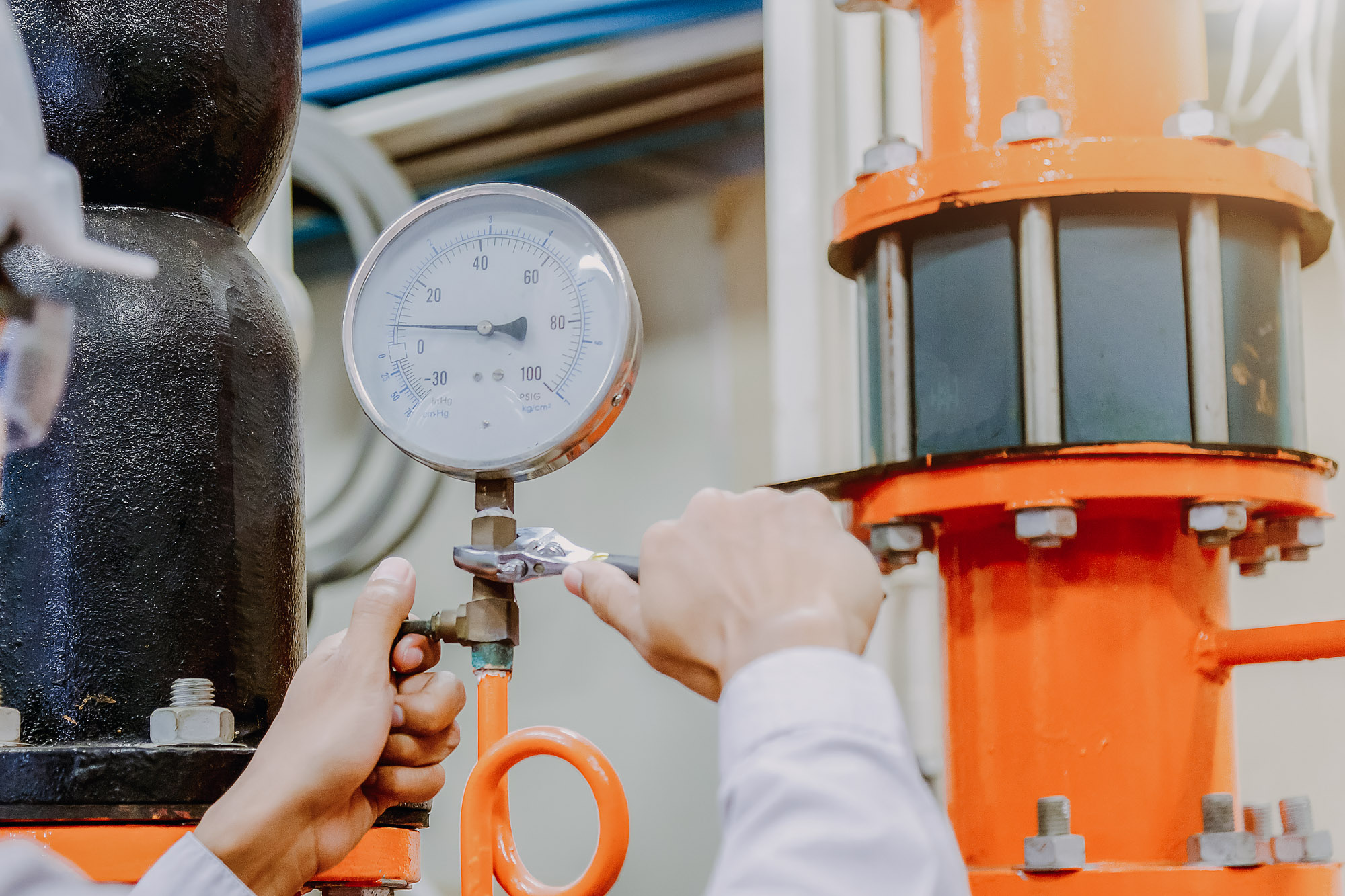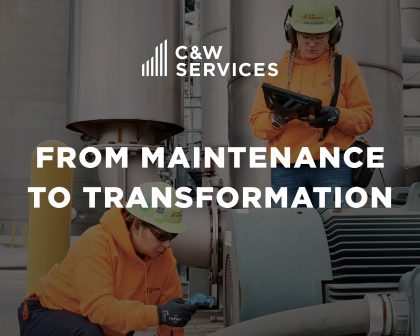
Much has been written about the Industrial Internet of Things (IIoT) and its potential to change manufacturing. The pharmaceutical industry is starting to recognize the benefits of digital technologies, in particular, the value that real-time asset and process intelligence obtained from these solutions.
The cost of a single critical asset failure in a pharmaceutical manufacturing plant can lead to scrapped batches costing hundreds of thousands of dollars. However, technology alone is rarely successful, and companies that are looking to implement IIoT technology need to have a reliability mindset in order to get value from their program.
C&W Services, a provider of integrated facility services, has been working with pharmaceutical manufacturers to improve asset reliability within their facilities. One site in particular is a North Carolina facility that runs 24/7, producing oral solid dose and injectable drugs. The site’s facility management team is responsible for critical environments and office space across 1.5 million square feet. The team consists of maintenance technicians, a large custodial staff, a reliability engineer, an operations manager, and predictive maintenance (PdM) technicians. Over the past four years, this team has introduced new processes, technology and culture changes. The results have been dramatic, including:
- Improved equipment reliability
- Improved employee engagement
- Reduced unplanned downtime
- Improved processes
- Increased preventive maintenance (PM) intervals
- Energy waste reduction
Understanding needs before making changes
Before C&W Services was brought in, the site was in run-to-failure mode. Run-to-failure maintenance is where assets are allowed to operate until they break down, with no preventive maintenance (e.g., re-lubricating bearings on a scheduled time) or predictive maintenance (e.g., trending the vibration to understand if a failure is likely to happen).
The main challenges at the site were ineffective preventive maintenance, a computerized maintenance management system (CMMS) that wasn’t used properly, a lack of predictive maintenance and ineffective cost controls. Preventive maintenance tasks were written, but they were not specific, didn’t match the equipment and weren’t based on criticality. In some cases, there were duplicate tasks or assets without any impact (e.g., a bathroom exhaust fan) being given the same importance as production-critical equipment. The true impact of unreliability and actual downtime was not clear because the maintenance team didn’t capture necessary information within the CMMS.
The CMMS was also missing key information like failure codes and equipment criticality rankings. Even though equipment reliability had a direct impact on operations, the teams lacked the tools and training to predict downtime and were entirely reactive. There were no approvals for spares or contractor work — if a work order was entered, parts were automatically ordered, regardless of cost, leading to higher maintenance costs and unmanaged parts inventories.
Recognizing the areas that needed improvement, the site operations manager put several changes in place to address them:
- Scheduling of tasks around critical equipment
- Lean maintenance processes and operator-driven reliability to increase employee ownership
- Improved preventive maintenance tasks
- Digital record keeping and mobile work order management for non-validated equipment (in process)
- Wireless predictive maintenance that provides real-time notification of problems
- Root cause analysis of all failures
By first understanding the site, the team was able to identify quick wins as well as longer term practices that would lead to a culture change where IIoT technology could contribute.
Don’t delay predictive maintenance
Recognizing the value that PdM brings in terms of labor efficiency and reduction in downtime is essential. Many of the preventive maintenance tasks that were being completed on the calendar year schedule were found to be unnecessary (e.g., filters were clean and didn’t need replacing, but they were replaced anyway). Shifting from reactive to predictive maintenance required a system that was easy to use and one that could automatically collect and analyze asset condition data. The maintenance team didn’t have the resources to analyze all the data coming in from multiple sources and at different times per day; they needed a system that could flag only the important issues.
The team chose an asset reliability and optimization system that could monitor a wide range of rotating and non-rotating equipment. The system, from Petasense, provides a machine learning-based Asset Health Score which provides real-time notification of developing problems. This reduces the time a reliability engineer has to spend on analysis. The system also gives the facility the ability to monitor almost any asset with multiple sensor input options. Detailed analysis tools enable investigation of problems when detected.
Recognizing the need to quickly demonstrate the benefits of continuous vibration monitoring, the operations manager commissioned the PdM program by setting up sensors on some of the critical air handlers (AHUs). Despite already improved PM practices, he was able to find additional improvement opportunities. For example, immediately after lubrication, the sensors showed over-greasing and soft foot from legs that weren’t tightened. It was discovered that lubrication technicians weren’t using grease guns properly, so this provided the opportunity to improve training. By demonstrating that PdM could pick up problems that were not solved by improved PM alone, money was allocated to expand the program.




